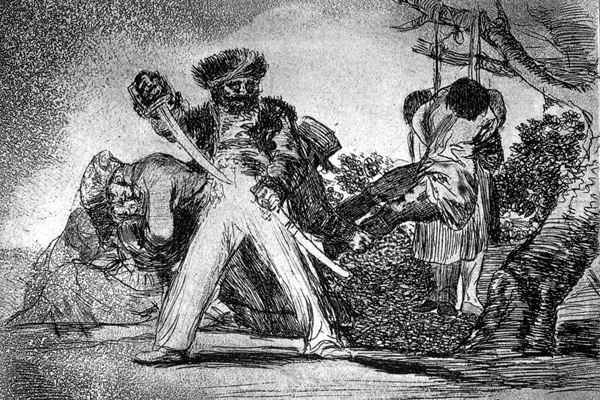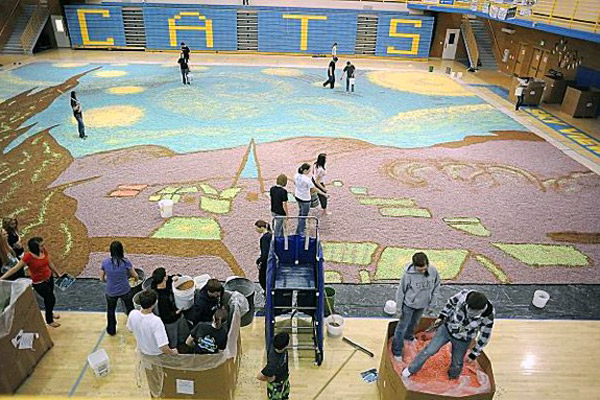
Rock star lives have long been grist for the Hollywood movie mill—“The Doors”, “The Buddy Holly Story”, “The Runaways”. Even fictional rock stars and real bluesmen have ruled the multiplex at various times (“The Rose”, “Ray”). But for some odd reason, biopics of jazz greats haven’t quite become a successful category onto their own. Sure, we’ve had a few winners here and there—but given that jazz and film were born and grew up in the U.S. right beside each other, it’s surprising that more flicks featuring the greats of this truly American art form haven’t added up to any sort of positive critical mass. Now with some historical breathing room between us and the highpoint of jazz, maybe the two jazz biopics in development (featuring Don Cheadle as troubled trumpeter Miles Davis and Mary J. Blige as genre-busting singer Nina Simone) might get a better shake at the box office. Obviously, both actors bear some resemblance to the performers they portray and one of them, Blige, has the musical chops to back up her portrayal. In anticipation, we’ve rounded up the best performances by actors playing jazz greats for you to add to your Netflix que.
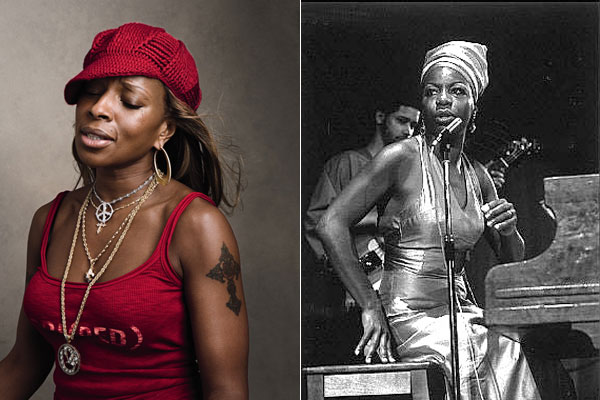
5. RAY LIOTTA AS FRANK SINATRA IN “THE RAT PACK” (1998)
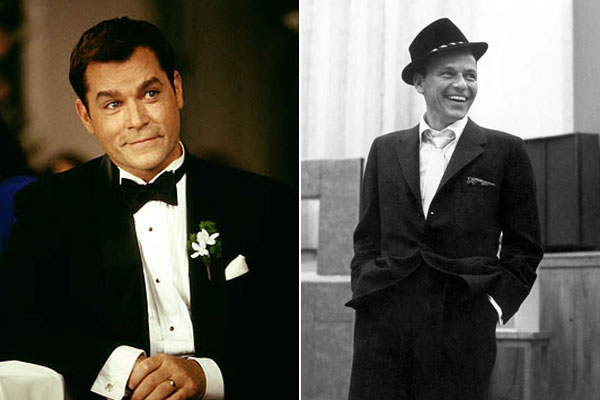
This made-for-HBO look at the strife and sex behind the mystique of the “rat pack” (Sintatra’s 50s and 60s crew of comedians, actors, and singers) didn’t hold together all that well as a movie, but its individual performances were spectacular. Don Cheadle offered an angry, righteous take on Sammy Davis Jr. in an electric fantasy sequence created by “Mummy” director Rob Cohen and Joe Mantegna was quietly effecting as Dean Martin sipping whiskey glasses filled with apple juice in order to play up his own alcoholism to Vegas crowds. But Liotta was boss of this pic and his take on Sinatra’s famous sexual rapacity, cold-blooded careerism, narcissism and genius seemed spot-on, even if the details and dialogue were completely fabricated. Liotta had to rely on Michael Dees to provide Sinatra’s singing voice and was a good deal taller and larger than Ol’ Blue Eyes. But whenever he reveals Sinatra’s out-sized ambition, the resemblance is stunning.
4. DIANA ROSS AS BILLIE HOLIDAY IN “LADY SINGS THE BLUES” (1972)
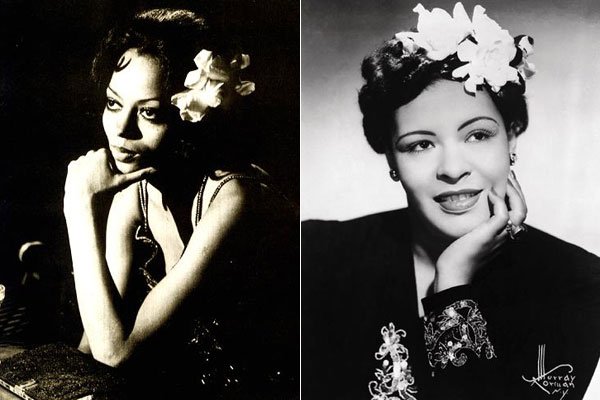
Let’s be clear—even though Ross managed to get an Academy Award nomination for this role, her talents lie in singing, not acting. Still, underpowered as a dramatic performer and far too skinny to play the beautiful, curved Holiday, Ross had the voice and performance sides of this part locked in. There’s something to be said for her reproduction of Holiday’s plight—a life filled with destitution, rape, heroin addiction, arrests, psychological problems and abusive treatment by her husband and mob enforcer Louis McKay (Billy Dee Williams in a fine turn). But over-emoting and drama were already established as parts of Ross’ stage act by then and the final chapters of his film draw deeply from that melodramatic well. Nonetheless, “Lady Sings The Blues” captures the seedy desperation that even some of Jazz’s true greats had to endure, making it an effective biopic.
3. SAL MINEO AS GENE KRUPA IN “THE GENE KRUPA STORY” (1959)
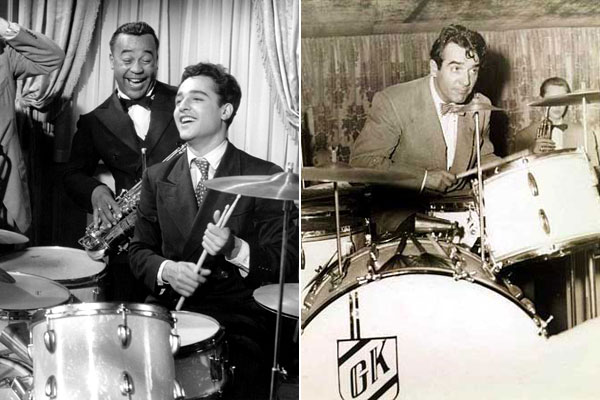
Sure, it sounds like the least exciting movie possible—the tale of a blindingly talented young white drummer pursuing his dreams in the New York club scene. But thanks to an athletic performance by one of cinema’s most under-appreciated actors, Sal Mineo (a handsome Krupa doppelganger), a canny script, and fine direction by Don Weis, this tale of the excitable drummer turns into something more. Krupa was intimately involved in this film, contributing to the soundtrack, its sometimes fanciful script, and the general tone. Filmed just before Jazz would give way to rock, perhaps no picture captures the excitement of 1940s and 1950s Jazz in a dramatic format as well as “The Gene Krupa Story”. Trippy visualizations of rhythm, race relations, cannibus, God, European philosophy, a Hollywood ending, this flick has it all and then some, remaining one of the few watchable films about drummers and drumming ever. As footnote, Mineo is the only actor on this list who worked hand-in-hand with his living subject.
2. JAMES STEWART AS GLENN MILLER IN “THE GLENN MILLER STORY” (1952)

Miller and Stewart were a perfect match in a way—not only did they both strike similar figures, but both men were the fresh-scrubbed, apparently all-American, conscientious leaders of their particular field. Glenn Miller was the country’s favorite Big Band leader and, in his time, the white face of an African-American art form for a nation thrilled by its sound but scared of its origins. Stewart too had become an agreed-upon mascot for American values through his many performances (Tom Hanks holds the title now). Peppered with appearances by actual Jazz stars and members of Miller’s band, the 1952Anthony Mann movie is a strong example of early 1950s Hollywood storytelling—guy grows up, falls in love with music, falls in love with a girl, then tragically dies while serving his country in the Army Air Force Band during World War II. The music swoons and this picture shimmers, even if the various particulars of Miller’s life give way to a more redemptive, patriotic telling of his story.
1. FOREST WHITAKER AS CHARLIE PARKER IN “BIRD” (1988)
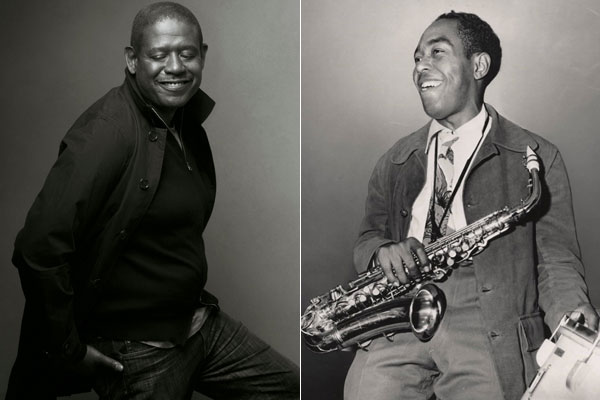
Like “Lady Sings The Blues”, “Bird” takes on the tale of a Jazz great who, for all his talent, fame, and spirit, was a magnet for suffering, died young, and was probably not very fun to be around when alive. In opposition to the Krupa and Miller biopics, Clint Eastwood’s carefully orchestrated “Bird” is neither a celebration of music or a celebration of a life. It is a sad, sad story of how music and money could only offer so much freedom to African Americans at the height of the Jazz Era. It used real locations, real live recorded music, and real quotes from Bird’s life both in America and in Europe. Moreover, Forest Whitaker’s first true leading performance channeled something real and unsettling about Parker—his sad ability to squander every ounce of stability his life could offer in favor of another late-night jam or another shot of smack. Whitaker’s Parker is the most real of all these performances and Cheadle, who will soon portray Davis, one of Parker’s greatest collaborators and rivals, and Blige, who will play an equally ingenious artist in Simone, would both do well to put this at the top of their Netflix que.
Tagged with: beyonce knowles billie holiday biopics bird Charlie Parker Diana Ross don cheadle etta james Film + Travel films forest whitaker Frank Sinatra gene krupa glenn miller jazz jimmy stewart mary j blige miles davis movies music Music + Travel ray liotta sal mineo
 MUSEYON BOOKS Smart City Guides for Travel, History, Art and Film Lovers
MUSEYON BOOKS Smart City Guides for Travel, History, Art and Film Lovers
